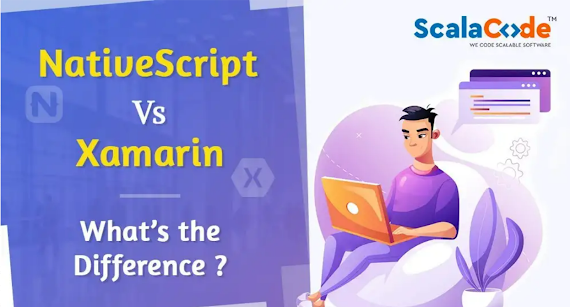Both the Xamarin and Nativescript frameworks provide a native user interface and are cross-platform. However, Nativescript is used for apps with Typescript & Javascript, while Xamarin is used for apps with .NET and C#-based codebases.
So, what’s the difference between these two frameworks? Let’s take a look:
NativeScript — A Short Brief
NativeScript is a framework that allows developers to build native mobile apps using JavaScript and TypeScript. It was created by Telerik, a company that makes tools for building web applications.
Xamarin - Xamarin is an ultimate cross-platform development tool that allows developers to build native apps for iOS and Android using C#. Microsoft created it.
NativeScript Vs. Xamarin: The Key Differences
Now that we’ve given you a brief overview of each framework let’s take a more in-depth look at the key differences between them:
1. Performance:-
Performance is one of the key distinctions between these two frameworks. Apps written in NativeScript are compiled into native code, enabling them to run instantly on processors. Overall performance improves as a result of this.
Xamarin apps, on the other hand, are compiled to intermediate language (IL), which then needs to be interpreted by a just-in-time (JIT) compiler. Thus, this can result in some performance issues, especially regarding startup time and memory usage.
2. Language:
Another key difference is the language that each framework uses. NativeScript apps are built using JavaScript or TypeScript, while Xamarin apps are built using C#.
3. Application Architecture:
The way that each framework structures its applications is also different. NativeScript uses a traditional JavaScript application architecture, with an app.js file containing all of the code for the app.
Xamarin uses the Model View ViewModel (MVVM) pattern, separating concerns between the UI and business logic. This can make it easier to manage large codebases and make changes to the app without affecting other parts of the code.
4. UI Components:
With NativeScript, developers have access to a wide range of UI components that can be used to build the app. These include both native iOS and Android components, as well as cross-platform components.
Xamarin also has a range of UI components available, but these are mostly wrappers around the native iOS and Android UI elements. This can make it difficult to create cross-platform apps that have a consistent look and feel on all platforms.
Read more: NativeScript Vs. Xamarin: What’s the Difference?
Other more useful blogs -
How Choosing Flutter App Development Could Be a Great Decision for Your Business?
Latest Trend of Mobile App Development Technologies
Unlock: Why Remote Hires of Kotlin Developers are So Popular These Days

Comments
Post a Comment